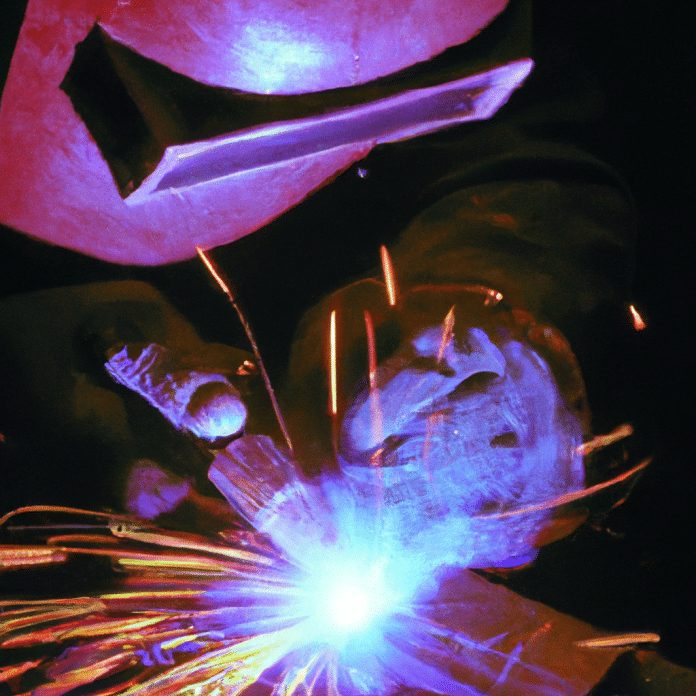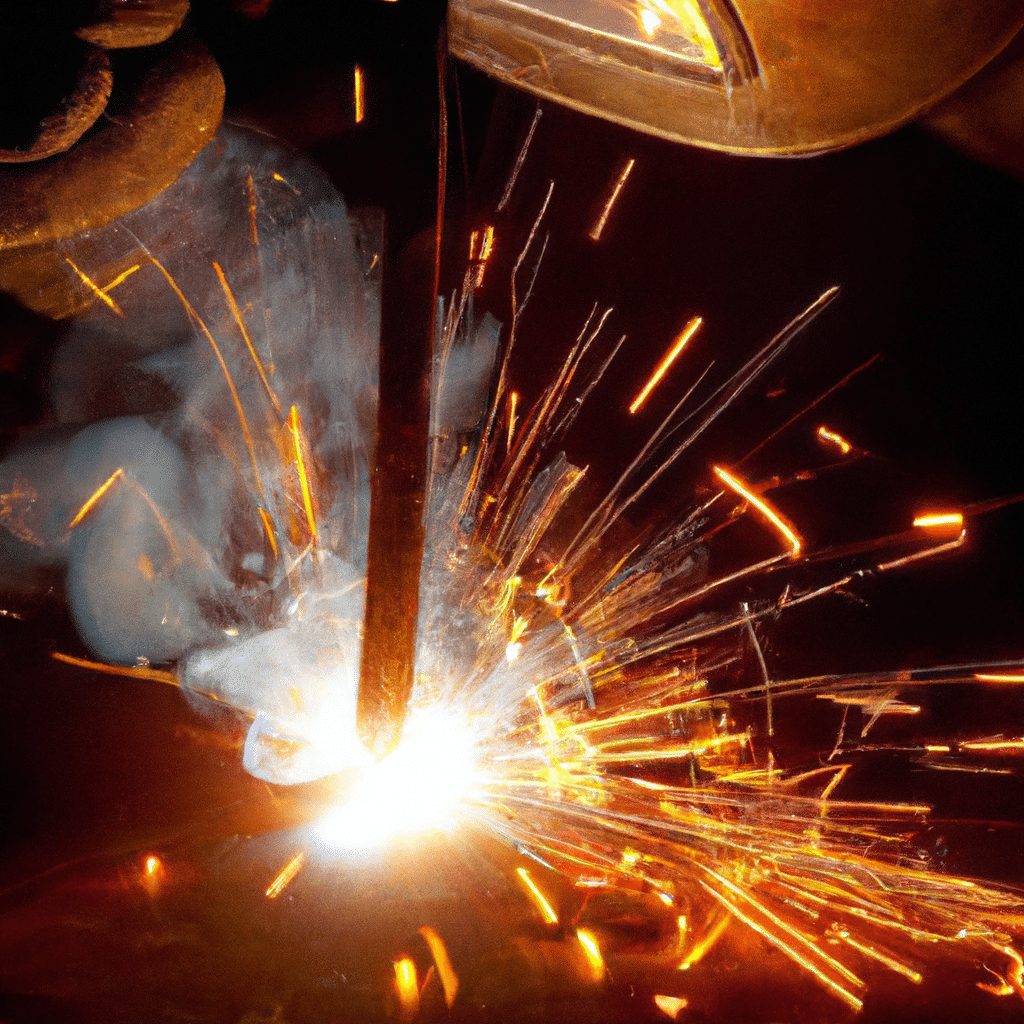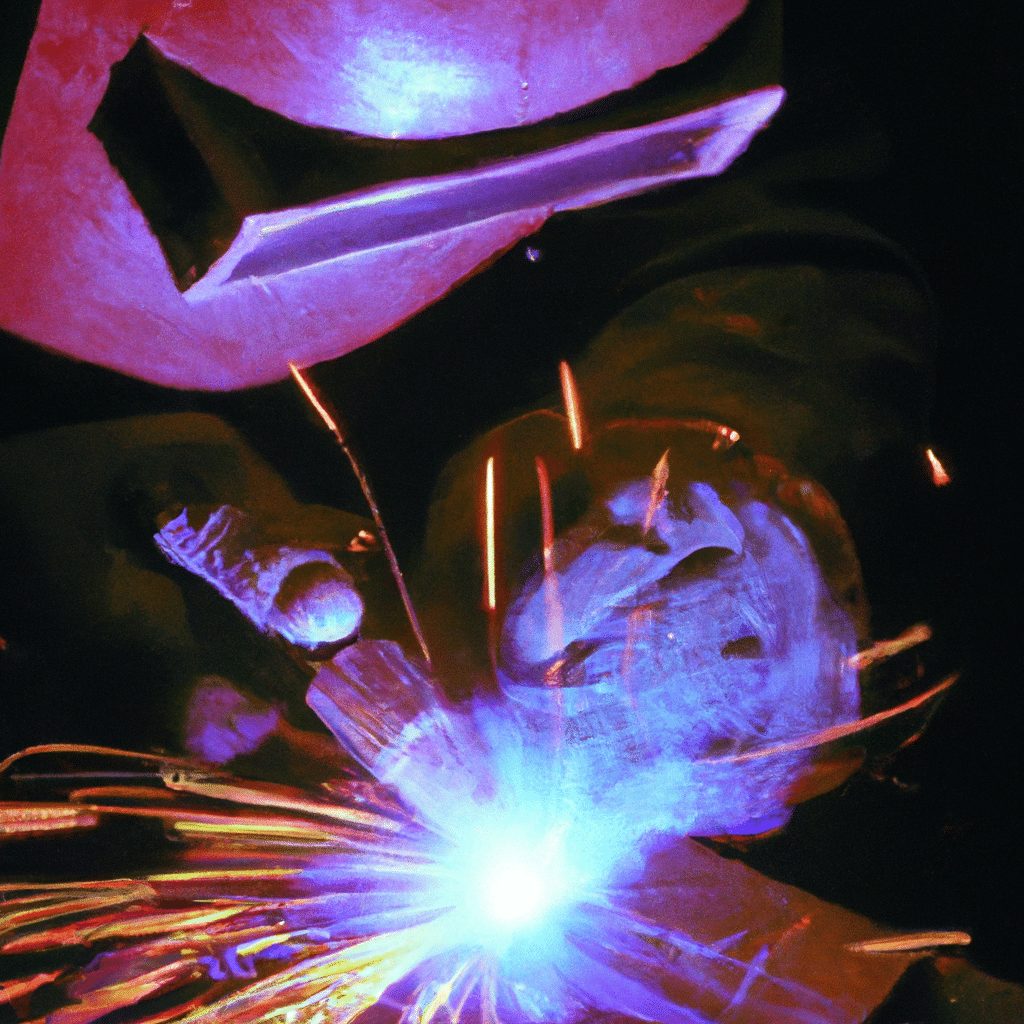In the world of welding, preventing burn-through is a constant concern. When the heat becomes too intense during the welding process, it can lead to the dreaded burn-through, a hole or excessive melting in the metal being worked on. This article explores some effective techniques and measures that can be taken to avoid this costly and time-consuming issue. From managing welding parameters to selecting the right materials and using suitable techniques, we will arm you with the essential knowledge to prevent weld burn-through and achieve flawless welds every time.
Review contents
Selecting the right welding process
Understanding the different welding processes
When it comes to welding, there are several different processes to choose from. Each process has its own advantages and disadvantages, so it’s important to understand them in order to select the right one for your project. Some common welding processes include MIG (Metal Inert Gas) welding, TIG (Tungsten Inert Gas) welding, and Stick welding. MIG welding is known for its speed and ease of use, while TIG welding offers more precision and control. Stick welding, on the other hand, is ideal for outdoor and heavy-duty applications.
Analyzing the suitability of the welding process for the materials
One of the crucial factors in selecting the right welding process is evaluating its suitability for the materials you are working with. Different welding processes have different capabilities when it comes to welding different types of materials, such as steel, aluminum, or stainless steel. Consider factors such as the melting point of the material and the welding process’s ability to penetrate and fuse the metals together effectively. Consulting with welding experts or referring to material-specific welding guidelines can be helpful in making the right selection.
Considering the thickness of the materials
Another important aspect to consider is the thickness of the materials you are welding. Not all welding processes are suitable for all thicknesses. For instance, MIG welding is often preferred for thinner materials, while TIG welding is better suited for thicker materials. It’s essential to understand the limitations of each welding process in terms of thickness and choose the one that can provide optimal results for your specific material thickness.
Choosing the appropriate welding technique
Determining the joint configuration
The joint configuration is a crucial element in welding. It refers to how two or more pieces of metal are to be joined together. The choice of joint configuration depends on factors such as the material being welded, the desired strength and appearance of the weld, and the access available for welding. Common joint configurations include lap joints, butt joints, and T-joints. The joint configuration determines the welding technique and the welding parameters to be used.
Using backing or heat sink
In some cases, using a backing or heat sink can be beneficial during the welding process. Backings are typically used when welding thin materials or when there is a need for supporting the weld on the reverse side. Heat sinks, on the other hand, help to dissipate the excess heat generated during welding, preventing burn-through or distortion. Backings and heat sinks can be made from materials such as copper or aluminum and should be properly positioned and secured to ensure effective heat dissipation and support.
Ensuring proper edge preparation
Proper edge preparation is essential to achieve high-quality welds. It involves cleaning and preparing the edges of the materials to be joined to remove any contaminants, oxides, or coatings that could interfere with the welding process. This can be done using methods such as grinding, wire brushing, or chemical cleaning. Additionally, proper edge preparation may involve chamfering or beveling the edges to facilitate better penetration and fusion of the weld.
Monitoring heat input
Controlling the welding current and voltage
Controlling the welding current and voltage is crucial in managing the heat input during welding. The welding current determines the heat generated at the weld point, while the voltage controls the arc length and intensity. It is important to adjust these parameters based on the material being welded, the desired penetration, and the welding process being used. In some cases, pulse welding can be employed to control the heat input more precisely and minimize the risk of burn-through.
Monitoring the travel speed
The travel speed, or the speed at which the welding torch moves along the joint, also affects the heat input. A higher travel speed can reduce heat input, while a slower speed can increase it. Monitoring and controlling the travel speed is crucial for preventing burn-through. It’s important to maintain a consistent and appropriate travel speed that allows for proper fusion and penetration without causing excessive heat buildup.
Implementing preheating or post-heating
In certain situations, preheating or post-heating the materials can help in managing the heat input during welding. Preheating involves heating the base metal before welding to reduce the temperature differential and prevent rapid cooling, which can lead to cracking. Post-heating, on the other hand, is done after welding to relieve residual stresses and ensure proper grain structure development. These heat treatment techniques can be effective in preventing burn-through and ensuring the integrity of the welds.
Managing weld penetration
Adjusting the welding parameters
Weld penetration refers to the depth to which the weld penetrates the base metal. It is influenced by various factors, including the welding current, voltage, travel speed, and joint configuration. By adjusting these welding parameters, the weld penetration can be controlled. Increasing the current and travel speed or decreasing the voltage can reduce penetration, while decreasing the current and travel speed or increasing the voltage can increase penetration. Experimentation and proper parameter adjustments are necessary to achieve the desired weld penetration without causing burn-through.
Employing intermittent welding
For certain applications, intermittent welding can be employed to manage weld penetration and prevent burn-through. Intermittent welding involves making staggered welds with intermittent pauses between them. This allows for the dissipation of excess heat and reduces the risk of overheating or burn-through. Intermittent welding can be particularly useful when welding thicker materials or in situations where continuous welding may lead to excessive heat buildup.
Utilizing pulse welding technique
The pulse welding technique offers precise control over the weld pool and heat input, making it useful for managing weld penetration. With pulse welding, the welding current is pulsed at a specific frequency, which allows for controlled periods of high and low heat input. This technique can be employed to achieve deep penetration without excessive heat buildup. By properly setting the pulse parameters, such as pulse frequency and duration, burn-through can be effectively prevented while ensuring high-quality welds.
Optimizing shielding gas
Choosing the appropriate gas composition
Shielding gas is essential for protecting the weld pool and preventing oxidation during welding. The choice of shielding gas composition depends on the material being welded and the welding process being used. Inert gases such as argon or helium are commonly used for TIG welding, while a mixture of inert and active gases is often used for MIG welding. It is important to choose the appropriate gas composition to reduce the risk of burn-through and ensure proper protection of the weld.
Monitoring and adjusting gas flow
Proper gas flow is crucial for effective shielding and preventing burn-through. The flow rate should be sufficient to create a stable shielding gas envelope around the weld pool, but excessive flow can cause turbulence and loss of shielding effectiveness. Monitoring the gas flow and adjusting it as needed is important to maintain an optimal shielding environment. Using a flow meter or regulator can help ensure a consistent and appropriate gas flow during welding.
Proper positioning of the gas nozzle
The positioning of the gas nozzle plays a role in optimizing shielding gas effectiveness and preventing burn-through. The nozzle should be positioned close enough to the weld pool to provide adequate shielding coverage but not so close that it obstructs the welder’s view or causes turbulence. Maintaining the correct distance and angle between the gas nozzle and the welding torch is crucial for ensuring proper gas delivery and preventing contamination or burn-through.
Utilizing filler materials effectively
Selecting the compatible filler metal
Filler materials are often used in welding to ensure proper fusion and strength of the weld. Selecting the appropriate filler metal that is compatible with the base metal is crucial for achieving high-quality welds. Different filler metals have different melting points and alloy compositions, so it is important to choose one that matches or complements the base metal. Consulting welding reference materials or seeking expert advice can help in selecting the right filler metal for your specific welding application.
Matching filler metal diameter with base metal thickness
Matching the diameter of the filler metal with the thickness of the base metal is important for effective filler material utilization. Using a filler metal with a diameter that is too large for the base metal thickness can lead to excessive heat input and the risk of burn-through. On the other hand, using a filler metal with a diameter that is too small may result in incomplete fusion and weaker welds. By selecting the appropriate filler metal diameter, you can achieve proper fusion and prevent burn-through.
Applying proper welding techniques with filler materials
Utilizing filler materials effectively requires applying proper welding techniques. It is important to ensure proper heat control, travel speed, and manipulation of the filler metal during welding. Maintaining a consistent arc length and avoiding excessive weaving or manipulation can help in managing heat input and preventing burn-through. Additionally, proper filler metal deposition techniques, such as consistent bead size and proper tie-ins, are essential for achieving strong and defect-free welds.
Maintaining proper weld joint fit-up
Ensuring accurate alignment
Proper alignment and fit-up of the weld joint are crucial for achieving high-quality welds and preventing burn-through. The joint edges should be accurately aligned and held in the proper position during welding to ensure proper fusion and penetration. The use of alignment tools, such as clamps or fixtures, can help achieve accurate alignment and prevent distortion or gaps that could lead to burn-through. Taking the time to properly align the joints before welding can save you from potential issues down the line.
Controlling gap width
Controlling the gap width between the joint edges is important for managing heat input and preventing burn-through. A smaller gap width can result in faster heat transfer and a higher risk of burn-through, while a larger gap may lead to poor fusion and weaker welds. Properly controlling the gap width by using spacing tools or adjusting joint preparation techniques is essential for maintaining the desired heat input and preventing burn-through.
Implementing necessary fixturing or clamping
Proper fixturing or clamping of the joint during welding can help maintain the desired fit-up and prevent burn-through. Fixtures or clamps can hold the joint in place and provide stability during the welding process. They can also help distribute the heat evenly and prevent distortion or warping of the joint. Using the appropriate fixturing or clamping techniques for your specific welding application is important for ensuring proper joint fit-up and preventing burn-through.
Controlling interpass temperature
Monitoring the temperature between welding passes
Interpass temperature refers to the temperature of the weld joint between successive welding passes. It is important to monitor the interpass temperature to prevent overheating and burn-through. Excessive interpass temperature can result in grain growth, distortion, or weld cracking. Techniques such as temperature measurement devices and intermittent cooling can help in maintaining the interpass temperature within the desired range and preventing burn-through.
Using thermal blankets or cooling methods
To control the interpass temperature and prevent overheating, the use of thermal blankets or cooling methods can be beneficial. Thermal blankets provide insulation and help maintain the desired temperature range during welding. Cooling methods such as air or water cooling can be employed to dissipate excess heat and prevent overheating. Proper utilization of thermal blankets or cooling methods can help control the interpass temperature and minimize the risk of burn-through.
Implementing proper waiting time between passes
Allowing sufficient waiting time between welding passes is necessary to manage the interpass temperature effectively. Waiting time allows for heat dissipation and helps prevent overheating and burn-through. The duration of the waiting time depends on factors such as the material being welded, the welding process, and the specific welding parameters used. By implementing a proper waiting time between passes, you can maintain the desired interpass temperature and achieve high-quality welds without the risk of burn-through.
Preventing overheating
Avoiding excessive welding current
Excessive welding current can lead to overheating and burn-through. It is important to use the appropriate welding current based on factors such as the material being welded, the desired penetration, and the welding process being used. Utilizing the manufacturer’s recommended welding parameters and consulting welding experts can help in avoiding excessive welding current, managing heat input effectively, and preventing burn-through.
Monitoring duty cycle
The duty cycle refers to the ratio of the welding time to the total operating time of the welding equipment. Continuous welding without proper rest periods can cause the equipment to overheat and lead to burn-through. Monitoring the duty cycle and ensuring that the welding equipment has sufficient downtime for cooling is crucial for preventing overheating. Following the equipment manufacturer’s guidelines for duty cycle and implementing appropriate rest periods can help maintain the desired temperature range and minimize the risk of burn-through.
Implementing appropriate cooling methods
Proper cooling methods can help prevent overheating and burn-through during welding. This can involve using techniques such as air or water cooling to dissipate excess heat from the weld joint and the welding equipment. Depending on the application and the specific welding process being used, different cooling methods may be suitable. Implementing appropriate cooling methods as needed can help maintain the desired temperature range, prevent overheating, and mitigate the risk of burn-through.
Conducting proper weld inspections
Performing visual inspections
Performing visual inspections is an important part of ensuring the quality of welds and identifying any signs of burn-through. Visual inspections involve visually examining the weld joint for any defects, such as cracks, porosity, or excessive penetration that may indicate burn-through. Proper lighting, magnifying tools, and the use of visual inspection criteria can help in conducting thorough visual inspections and identifying any issues that need to be addressed.
Utilizing non-destructive testing techniques
Non-destructive testing (NDT) techniques can provide further insights into the quality of welds and aid in detecting hidden defects or signs of burn-through. Techniques such as radiographic testing, ultrasonic testing, or dye penetrant testing can be employed to examine the weld joint without causing any damage. NDT techniques can help in identifying internal defects or incomplete fusion that may not be visible during visual inspections, ensuring the integrity of the weld and preventing potential burn-through.
Identifying signs of burn-through
During weld inspections, it is important to identify any signs of burn-through and take appropriate actions to address them. Signs of burn-through can include excessive weld penetration, holes, or irregularities in the weld joint. Identifying these signs early on allows for prompt remedial measures to be taken, such as adjusting welding parameters, modifying joint fit-up, or applying additional layers of weld metal. By addressing the signs of burn-through in a timely manner, the integrity of the weld can be preserved, and the risk of further damage minimized.
In conclusion, selecting the right welding process, choosing the appropriate welding technique, monitoring heat input, managing weld penetration, optimizing shielding gas, utilizing filler materials effectively, maintaining proper weld joint fit-up, controlling interpass temperature, preventing overheating, and conducting proper weld inspections are all crucial aspects of preventing weld burn-through. By following these guidelines and implementing the necessary precautions, welders can achieve high-quality welds while minimizing the risk of burn-through and ensuring the structural integrity of the welded components.





























